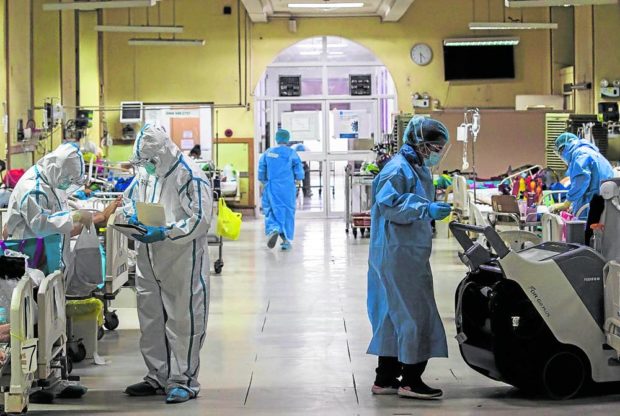MANILA, Philippines — The COVID-19 positivity rate in Metro Manila rose to 14.5 percent, above the World Health Organization’s (WHO) 5 percent threshold.
From 12.7 percent last September 7, Metro Manila’s positivity grew to 14.5 percent as of September 14, independent analytics group OCTA Research reported on Friday.
The positivity percentage has been rising, with OCTA Research fellow Guido David saying it could reach even higher than the 17.5 percent recorded last month.
“The previous peak in positivity rate in the NCR during this wave was 17.5% on August 5. There is a possibility that this current resurgence will exceed this number,” David said on Twitter.
NCR positivity rate increased from 12.7% to 14.5%. HCUR increased from 36% to 39% while ICU occupancy increased from 24% to 33%. The one week growth rate in cases was 18%, while the reproduction number increased from 1.03 to 1.14. ADAR increased to 6.12 #COVID19 @dzbb @DZAR1026 pic.twitter.com/PiVQkee3u9
— Dr. Guido David (@iamguidodavid) September 15, 2022
Because of the return to in-person education, David believes that increased mobility is to blame for the recent uptick in infectious disease rates.
The one-week growth rate of COVID-19 infections in Metro Manila spiked 18 percent from -4 percent the past week.
“The rise in cases in the NCR is likely to cause a corresponding rise in infections in nearby regions; Rizal and Bulacan are currently on an uptrend,” David added.
Likewise, the reproduction number inched up from the 1.03 registered on September 5 to 1.14 as of September 12.
The average daily attack rate — the incidence showing the average number of new cases per 100,000 individuals — is considered “moderate” in NCR at 6.12.
COVID-19 healthcare utilization rate in Metro Manila also rose to 36 percent on September 5 and 39 percent as of September 14.
Occupancy of intensive care unit beds (ICU) also rose from 24 percent to 33 percent during the same period. As a result, there are 358 ICU beds occupied as of September 14.
The healthcare and ICU utilization rates are considered “low,” said David.
